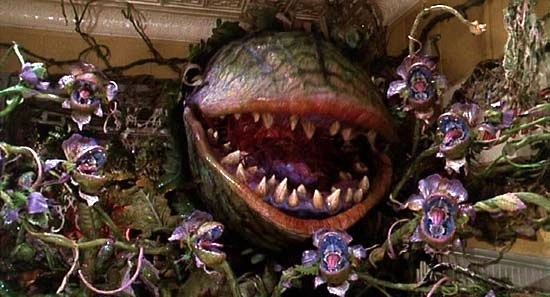By: Johanna Wu
Have you ever wondered if a plant could eat a human? In the movie Little Shop of Horrors, there is a ginormous plant that needs human blood to grow. The Piranha Plant in the video game Mario Bros. would gladly make our favorite plumber a snack. In The Addams Family, Morticia owns an “African Strangler” plant, that has a habit of biting humans.
There is one real type of plant that could do this: the carnivorous plant. Carnivorous plants are meat eaters. They eat insects, animal poop, and the occasional small bird or mammal. Many carnivorous plants have different strategies for catching their prey. For example, traps such as sticky leaves, slippery tubes, and hairy snap-traps to catch insects, small birds, or mammals. Humans probably aren’t going to be eaten by 800 carnivorous plants anytime soon, but what does it take?
One common type of carnivorous plant is the pitcher plant. These plants lure prey into their tube-shaped leaves using sweet nectar. “You could get a really tall, deep pitcher that would be effective as a pitfall trap for larger animals,” says Kadeem Gilbert a botanist who studies tropical pitcher plants at Michigan State University in Hickory Corners.
These “pitchers” have a slippery coating on their lips. Insects and sometimes small animals who lose their footing on this coating, fall into a pool of digestive enzymes. Those enzymes break down the insect or animal’s tissue into nutrients that the pitcher plant can absorb.
Even though the pitcher plant can digest insects and small mammals, it probably won’t be big enough to capture and digest a human.
The Venus flytrap captures its prey by closing its leaves when an insect lands on them and then digests it with enzymes. But this process takes up a lot of energy. So, a Venus flytrap does not have nearly enough energy to eat a human.
Pitcher plants and Venus fly traps will offer humans too many chances to wriggle free. Large mammals could escape by simply thrashing about, says Adam Cross a restoration ecologist at Curtin University in Bentley, Australia, who has studied meat-eating plants. “A person trapped in a pitcher plant could easily punch a hole through its leaves to drain the fluid and escape”, he says. And snap-traps? “All you’d need to do is just cut or pull or tear your way out.”
The Sundew plant, however, has glue-like traps which prevent an insect from escaping. These carnivorous plants use their leaves covered in sticky secretions and tiny hairs to capture insects. The best human-trapping plant would probably be a massive sundew that carpets the ground with long, tentacle-like leaves, Cross says. Each leaf would be covered in globs of a sticky substance. “The more you struggled, the more you would become enmeshed and the more your arms would be unable to function properly,” says Cross.
If a plant could eat a human, it would be a massive sundew, capturing its prey with a sticky substance. A man-eating plant probably won’t happen anytime soon though.











